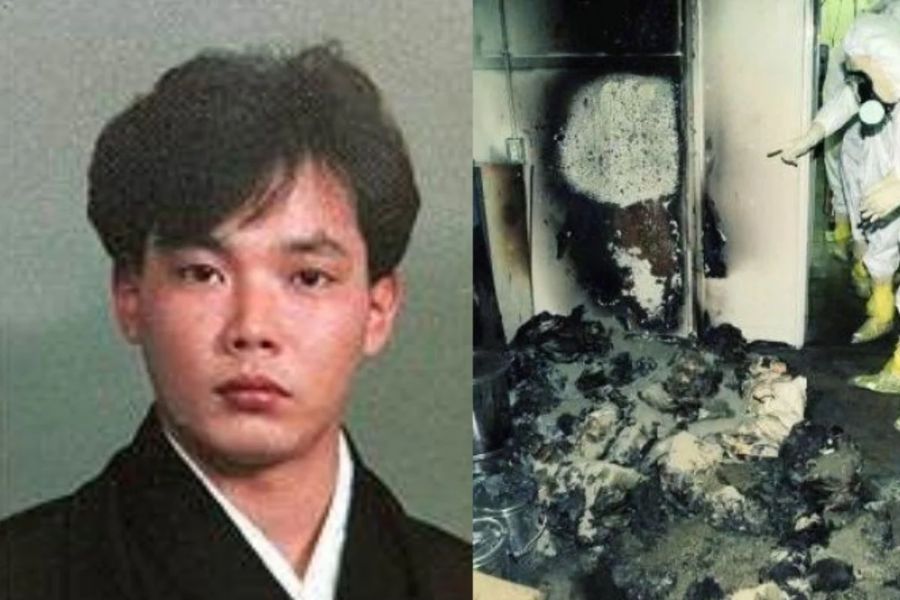Exploring The Life And Career Of Hisashi Ouchi: A Tragic Tale Of Science And Survival
Hisashi Ouchi is a name that resonates within the realms of science and tragedy. His story is not just a tale of an unfortunate accident but also a profound reflection on the implications of radiation exposure and the human spirit's resilience in the face of adversity. In this article, we will delve into the life of Hisashi Ouchi, exploring his background, the catastrophic incident that changed everything, and the ongoing discourse surrounding radiation safety and ethics in science.
Throughout this article, we will examine the details of Hisashi Ouchi's life, the events leading up to the accident, the aftermath of the incident, and the broader implications for nuclear safety. Our exploration aims to honor Ouchi's memory by shedding light on the importance of safety measures in scientific endeavors and the ethical considerations surrounding human subjects in research.
Table of Contents
- Biography of Hisashi Ouchi
- Early Life and Education
- The Tokaimura Nuclear Accident
- Aftermath and Medical Response
- Public Reaction and Media Coverage
- Changes in Safety Regulations
- Legacy of Hisashi Ouchi
- Conclusion
Biography of Hisashi Ouchi
Hisashi Ouchi was born on March 1, 1964, in Japan. He grew up in a society that valued education and technological advancement, which influenced his decision to pursue a career in nuclear physics. Ouchi was known for his intelligence and dedication to his studies, eventually leading him to work at the Tokaimura nuclear facility.
| Personal Information | Details |
|---|---|
| Name | Hisashi Ouchi |
| Date of Birth | March 1, 1964 |
| Place of Birth | Japan |
| Profession | Nuclear Physicist |
| Incident Date | September 30, 1999 |
| Date of Death | December 21, 1999 |
Early Life and Education
Growing up in Japan, Ouchi was influenced by the nation's rapid technological advancements post-World War II. His passion for science was evident from a young age, leading him to excel academically. He pursued a degree in nuclear engineering, where he demonstrated a keen interest in nuclear safety and the potential benefits of nuclear energy.
Academic Achievements
- Graduated with honors in Nuclear Engineering.
- Completed internships at prominent nuclear facilities.
- Published research on nuclear safety protocols.
The Tokaimura Nuclear Accident
The Tokaimura nuclear accident occurred on September 30, 1999, at a uranium processing facility in Tokaimura, Japan. Ouchi was one of the workers involved in the incident, which was caused by improper handling of uranium. A criticality accident occurred when workers failed to follow safety protocols, leading to an uncontrolled nuclear chain reaction.
Details of the Accident
The accident resulted in a massive release of radiation, exposing Ouchi and two other workers to lethal doses. Ouchi received an estimated dose of 17 sieverts, far above the threshold for survival. The event prompted immediate medical intervention and highlighted severe lapses in safety measures.
Aftermath and Medical Response
Following the incident, Ouchi was hospitalized and underwent extensive medical treatment. His condition deteriorated rapidly due to the effects of radiation poisoning. Medical professionals struggled to provide effective treatment as Ouchi's body experienced severe damage at the cellular level.
Medical Treatment Challenges
- Severe burns and radiation sickness.
- Infection due to compromised immune system.
- Experimental treatments used with limited success.
Public Reaction and Media Coverage
The Tokaimura incident garnered significant media attention both in Japan and internationally. Public concern about nuclear safety escalated, leading to protests and demands for stricter regulations in the nuclear industry.
Impact on Nuclear Policy
- Increased scrutiny of nuclear facilities.
- Calls for improved safety protocols.
- Legislative changes regarding nuclear energy management.
Changes in Safety Regulations
In the wake of the Tokaimura accident, Japan implemented several changes to its nuclear safety regulations. The government recognized the need for stringent oversight and accountability within the nuclear industry.
New Safety Measures
- Enhanced training for nuclear facility workers.
- Regular safety audits and inspections.
- Increased public transparency regarding nuclear operations.
Legacy of Hisashi Ouchi
Hisashi Ouchi's tragic story serves as a reminder of the human cost associated with scientific advancement. His legacy continues to influence discussions around nuclear safety, ethics in scientific research, and the importance of rigorous safety protocols.
Influence on Future Generations
- Inspiring future scientists to prioritize safety.
- Encouraging ethical considerations in research.
- Promoting awareness of radiation risks.
Conclusion
The life of Hisashi Ouchi is a poignant reminder of the delicate balance between scientific progress and human safety. His story underscores the importance of adhering to safety protocols and the ethical responsibilities of scientists. As we reflect on Ouchi's life and legacy, let us advocate for a future where safety is paramount in all scientific endeavors. We encourage readers to share their thoughts in the comments below and explore more articles on our site to learn about the significance of safety in science.
Thank you for taking the time to read about the life and legacy of Hisashi Ouchi. We hope this article has provided you with valuable insights into the world of nuclear safety and the human stories behind it. We invite you to return for more engaging content and to stay informed on crucial topics in science and safety.
Denise Bellingham: A Comprehensive Biography And Career Overview
Usher Height In Feet: Exploring The Height Of The R&B Legend
Exploring Movie Rulz Adult: A Comprehensive Guide


